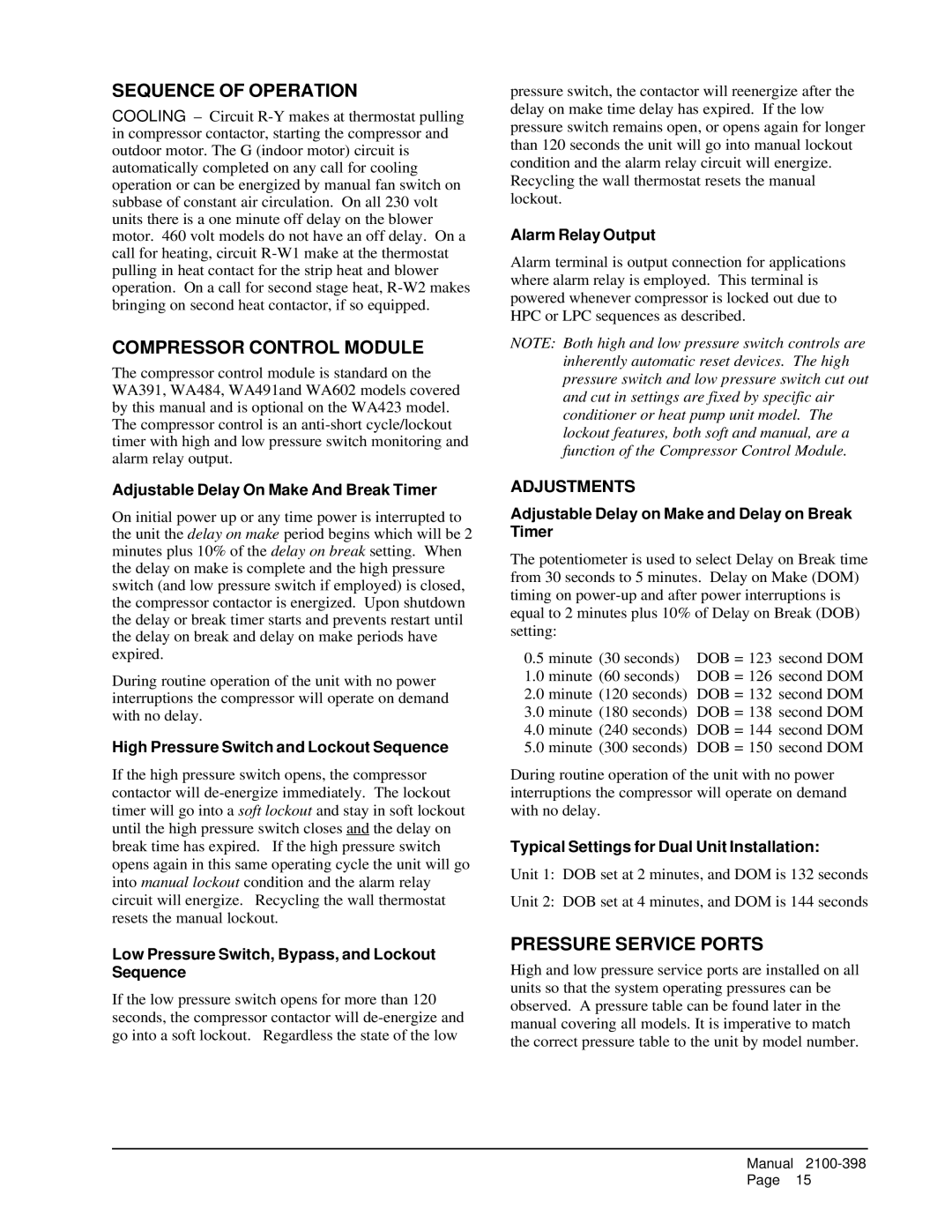WA423, WA381, WA484, WA491, WA602 specifications
Bard is a leading manufacturer in the field of air conditioning and heating solutions, known for its innovative products that cater to both residential and commercial needs. Among their notable models are the Bard WA381, WA602, WA484, WA491, and WA423, each designed with specific features and technologies that enhance efficiency, reliability, and user comfort.The Bard WA381 is a compact unit that excels in energy efficiency and ease of installation. With a focus on high-performance cooling and heating capacities, this model is ideal for areas requiring reliable temperature control in limited spaces. Its advanced engineering ensures low noise operation, making it suitable for quiet environments, such as libraries and offices. The WA381's user-friendly controls and robust construction make it a favored choice among contractors and users alike.
The WA602 model stands out for its dual functionality, providing both cooling and heating. This unit incorporates state-of-the-art heat pump technology, allowing for year-round comfort. With a high Seasonal Energy Efficiency Ratio (SEER) rating, the WA602 combines cost-effective performance with eco-friendly operation. Its durable design and weather-resistant features ensure long-term reliability, even in harsh environments.
Bard's WA484 offers a seamless blend of performance and versatility. This model is equipped with advanced refrigeration technology, providing superior cooling efficiency. The WA484 is designed to accommodate varying load conditions, making it adaptable to numerous applications. Additionally, its intelligent control systems facilitate easy monitoring and adjustments, promoting optimal energy use and user convenience.
The WA491 is engineered with a focus on energy conservation and performance. With a high Energy Efficiency Ratio (EER), this unit minimizes operational costs while delivering exceptional climate control. The WA491's robust construction includes advanced insulation and weatherproofing, ensuring effective performance in diverse conditions. Furthermore, its features include remote monitoring capabilities, allowing users to manage their heating and cooling systems from anywhere.
Lastly, the WA423 is designed for maximum flexibility and efficiency. This model boasts a compact footprint, making it suitable for various installations. With an emphasis on quiet operation, the WA423 is perfect for settings where noise reduction is critical. It is equipped with modern control systems that optimize performance while reducing energy consumption, making it an eco-friendly choice for users.
Collectively, these Bard models reflect a commitment to quality, efficiency, and user satisfaction, setting the benchmark for heating and cooling solutions in the market.
